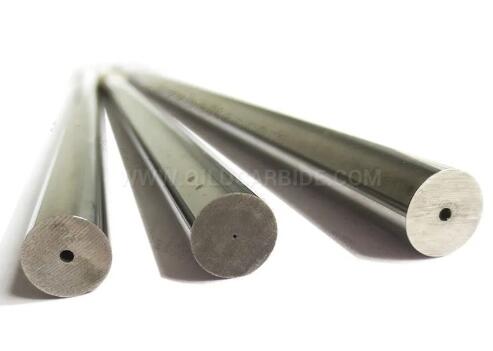How to Choose Tungsten Carbide Rods Grade
Tungsten carbide rods are widely used in various industries for their exceptional hardness, wear resistance, and strength. Whether for cutting tools, drills, or wear parts, selecting the right grade of tungsten carbide rods is crucial to ensure optimal performance and longevity. With a myriad of options available, understanding the factors that influence grade selection is essential for making inf
Barbed Wire Length Per Roll are widely used in various industries for their exceptional hardness, wear resistance, and strength. Whether for cutting tools, drills, or wear parts, selecting the right grade of tungsten carbide rods is crucial to ensure optimal performance and longevity. With a myriad of options available, understanding the factors that influence grade selection is essential for making informed decisions.

Application Requirements
Before delving into the specifics of tungsten carbide rod grades, it's vital to assess the requirements of your application. Consider factors such as the type of material being machined, the machining process involved, and the desired outcome. Different applications may demand varying levels of hardness, toughness, and wear resistance, necessitating the selection of an appropriate grade tailored to the specific task at hand.
Composition and Properties
Tungsten carbide rods are typically composed of tungsten carbide particles bonded together by a metallic binder, such as cobalt. The composition and proportions of these components significantly influence the properties of the resulting material. Higher tungsten carbide content generally translates to increased hardness and wear resistance, while the binder phase contributes to toughness and shock resistance. Understanding the balance between these properties is essential for selecting the optimal grade for your application.
Grain Size and Structure
The grain size and structure of tungsten carbide rods play a crucial role in determining their mechanical properties and performance characteristics. Finer grain sizes typically result in higher hardness and wear resistance, making them suitable for precision machining applications. Conversely, coarser grain sizes may offer improved toughness and impact resistance, making them ideal for heavy-duty cutting or drilling operations. Consider the specific demands of your application when evaluating grain size and structure requirements.
Coating Options
In addition to the inherent properties of the tungsten carbide material, coatings can further enhance performance and extend tool life. Various coating options, such as titanium nitride (TiN), titanium carbonitride (TiCN), and diamond-like carbon (DLC), provide additional layers of protection against wear, friction, and corrosion. When choosing a tungsten carbide rod grade, consider whether coating options are available and compatible with your application requirements.
Manufacturing Standards and Quality Assurance
When sourcing tungsten carbide rods, it's essential to partner with reputable suppliers who adhere to strict manufacturing standards and quality control processes. Ensure that the supplier complies with industry regulations and certifications to guarantee the consistency and reliability of their products. Quality assurance measures, such as comprehensive testing and inspection protocols, are instrumental in verifying the performance and integrity of tungsten carbide rod grades.
Conclusion
Selecting the right grade of tungsten carbide rods is a critical decision that directly impacts the performance and efficiency of machining operations. By considering factors such as application requirements, composition, grain size, coating options, and quality assurance standards, you can make informed choices that optimize productivity and minimize downtime. At [Company Name], we offer a comprehensive range of tungsten carbide rod grades tailored to meet the diverse needs of our customers.
For inquiries about choosing the ideal tungsten carbide rod grade for your application, please don't hesitate to contact us or reach out to our experienced team of experts. With our commitment to quality and customer satisfaction, we are dedicated to providing superior solutions that exceed your expectations.